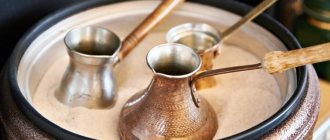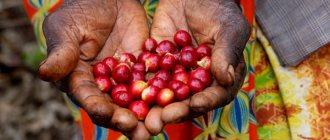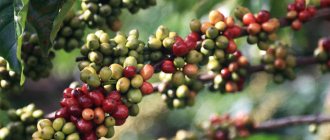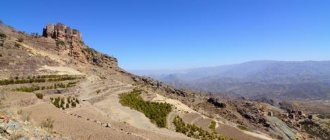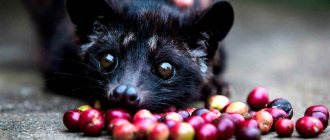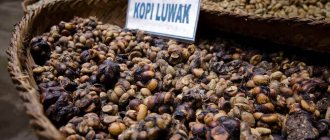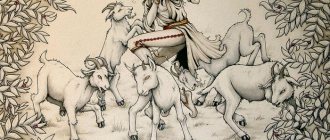India has a reputation as perhaps the most romantic country, and, I must say, it is well deserved. Even the simplest and most common phenomena are filled with legends. Indian coffee is no exception. Even the very appearance of the first coffee beans in this country is surrounded by an aura of romance. It's time to go on a little exotic trip and get acquainted with the coffee history of India, especially since today the country is one of the top 10 leading global producers of aromatic beans.
Statistics and facts
- India ranks third in Asia and fifth in the world in coffee exports, sixth in the world in its production.
- There are at least 13 unique coffee varieties grown in India.
- The country is constantly conducting economic programs to support local producers, research is underway, and the coffee industry is more focused on quality than quantity.
- India is one of the 25 most biodiverse countries with a unique climate and nature that has no analogues.
Types grown
The first plantations in India were established from Arabica. This type of coffee tree grows well at high altitudes, and its fruits are distinguished by a soft, even aroma and non-sour taste. But the plant is demanding on conditions and susceptible to diseases.
Therefore, robusta is also grown in low mountains, which has good natural protection and high yield. Its beans produce very strong coffee with a strong taste and aroma. Robusta from India is considered one of the best on the planet and is included in many elite blends.
In the country, plantations of these types of coffee trees are equal in area, but robusta, due to its increased fertility, accounts for 2/3 of the total harvest. Its caffeine content is twice as high as Arabica, but the latter contains 3 times more aromatic oils. Therefore, Arabica provides the flavor accents and aromatic notes of the coffee drink, while Robusta gives it strength and forms the famous “crema” foam.
Story
Coffee appeared in India in the second half of the 17th century thanks to the legendary pilgrim named Baba Budan. The pilgrim traveled to Mecca and smuggled seven green coffee beans out of Yemen, hiding them in his beard. The saint planted coffee at a place now called Baba Budan Hills, located in Karnataka.
Baba Budan smuggled coffee beans in his beard
At first, the plant was used exclusively for decorative purposes, but over time, coffee moved from gardens to vegetable gardens, and in the 18th century the first commercial plantations appeared. Since then, the production of aromatic beans began to grow exponentially (this was especially facilitated by the influence of England, which was interested in a reliable and inexpensive source of coffee beans).
Initially, the main emphasis was on Arabica, but this variety is very susceptible to diseases and requires careful care. Over time, the Indians began to grow Robusta, and by crossing Arabica and Liberica, a new variety appeared, similar to Arabica in its main characteristics, but more persistent and less capricious.
Coffee came to India from Yemen
In 1942, the Coffee Board of India was founded, the main purpose of the organization was to protect small businesses and control coffee exports.
The Indian coffee industry is currently experiencing a period of growth: export volumes are increasing, Robusta is rising in price and bringing more money into the budget.
Coffee industry of the country
Coffee has been growing in India since the 17th century. It was then that one very enterprising Indian illegally exported several grains from Yemen. Until this point, coffee plantations were located only in African countries.
The culture has taken root well in the state. Initially, it was grown only in the southern regions, but after a while trees began to be planted in the northern provinces. Only Arabica beans were cultivated, but they were too sensitive to rust. Therefore, we had to choose more resistant varieties. As a result, Arabica plantings were partially replaced by Robusta.
India ranks sixth among global coffee producers
The crop is grown on an area of about 400 thousand hectares. The ratio of Arabica to Robusta is 1:3. The harvest is harvested twice a year. About 70% is exported.
Production Features
India (like Ceylon) is primarily a “tea” country; coffee does not bring the main income to the state treasury, as in Brazil or Colombia, but India still has some achievements in this field.
In 2007, the country produced 262,000 tons of grains. As mentioned, 97% of all coffee is grown in three southern states: Karnataka, Kerala and Tamil Nadu.
India is the only country in the world where coffee is grown under two-tiered canopies formed by the crowns of evergreen trees, and coffee in these “forest plots” is often not the only crop. Spices are often planted literally side by side: cinnamon, cloves, cardamom, nutmeg. Coffee beans absorb spicy aromas, which subsequently affects the taste of the drink.
One of the main problems of the Indian coffee industry is high humidity, which provokes the development of rot and mold, especially the Hemileia vastatrix type.
Two methods are used to process coffee cherries:
- Dry – the grains are dried in the sun and then the pulp is removed.
- Wet – the pulp is removed immediately using water and fermentation.
Method of aerial processing of grains by sea winds
Of great interest is a method of processing coffee beans called Malabar Monsoon. Many believe that this is the name of a variety of Arabica. In fact, both Arabica and Robusta can be prepared using this method.
After harvesting, the peeled berries for 3–4 months , where the sea winds, the monsoons, blow. During this time, the grains increase in size as they absorb moisture, and also change color - they become yellowish.
How this method was discovered: previously, when grains were transported for a long time in the holds of ships, they were naturally exposed to sea air. When canals were built and the time ships spent at sea was reduced, grains began to be delivered while still green. Customers were outraged that they still wanted yellow beans.
It was necessary to artificially create conditions for the fermentation of raw materials. The secret lies in the mineral composition of sea water and air, as well as in the amount of oxygen, ozone and other taste factors.
Types of Indian coffee
They include all possible variations: brewed, instant, flavored, even decaffeinated.
The highest quality coffee is Mysore coffee, which is produced in Karnataka and processed only using the wet method; it has an exquisite taste and rich bouquet. Sometimes already purified beans are left in open areas during the rainy season so that the humid and warm wind “blows out” the sourness from the coffee, makes it sweeter, and adds woody and earthy notes (the packaging with such beans may be marked Monsooned).
Mysore coffee – the best Indian coffee
After this natural treatment, the green unroasted beans turn yellowish or light brown, which then produces a wonderful, full-bodied espresso.
Popular varieties
Indian Arabica comes in several varieties. Among the most popular varieties are:
- Plantation A. Coffee beans have a higher strength. It is characterized by a delicate aroma, pleasant chocolate notes, a slightly tart, dense taste with a slightly pronounced sourness. In addition, the presence of hints of spices is noted. The variety is often added to mixtures. Thanks to this, it is possible to give the coffee drink softness. Connoisseurs of strong coffee prefer to use the variety in its pure form.
- Karnataka. This species is characterized by a mild taste with pronounced sourness and a persistent, rich aroma. Particularly attractive are the shades of citrus and spice, as well as a pleasant aftertaste.
- Mysore Nuggets Extra Bold. Belongs to the group of elite varieties. The grains are quite large, oily, and have a green-bluish tint. A drink based on them is characterized by a delicate taste and pronounced sourness. It contains spicy notes that are fully revealed in the aftertaste.
- Mayson . The highlight of this variety is its rich taste without any inclusions and persistent aroma.
Karnataka
Mysore Nuggets Extra Bold
Also popular varieties of Robusta should be highlighted:
- Kaapi Royal. The drink based on these grains has a soft, dense taste and an unobtrusive warm aroma.
- Kaveri. This type is characterized by a strong taste with a pleasant hint of spice and a slightly oily aftertaste.
- Kent . The cultivation of this variety of robusta began only a few decades ago. The variety is characterized by a delicate aroma and pleasant chocolate shades.
- S795. The taste characteristics of this type are in many ways similar to Yemeni mocha. It has distinct notes of chocolate and cocoa.
Monsooned coffee
Kaapi Royal
We should also talk about the legendary brand Monsooned coffee. Monsoon coffee cannot be called a separate variety. To obtain the finished product, the grains are subjected to special processing. The raw materials are spread on the seashore, where they are blown by the wind for a week. After this, the grains are transferred into bags and placed under canopies. After three months, the coffee is considered ready and sent for sale.
Indian coffee varieties
More than 60% of all products are Robusta, the rest is Arabica (regular or crossed with Liberica). Premium varieties are grown at an altitude of 1000-1500 m above sea level, simpler coffee – 500 meters lower.
The most popular Arabica varieties: Kent, S.795, Cauvery (Catimor), Selection 9. Robusta: S.274, CxR.
India is also proud of its organic coffee, grown without the use of chemical fertilizers or other unnatural substances. Typically, these products are cultivated in dense shady forests on the most fertile soils. In 2008, 20 farms were accredited to meet the requirements of organic production; the total volume of organic coffee was 1,700 tons per year.
Varieties
Many varieties of Indian coffee are named after the area in which they are grown. Others are named by inconspicuous, dry abbreviations, meaning the selection stage in the creation process. The most popular varieties of Indian Arabica coffee include:
- Kent (Kents). The name was received in honor of its creator, one of the British planters who was engaged in selection in the 20s of the twentieth century. This is an early, extremely disease-resistant variety, but at the same time low-yielding. "Kent" was in great demand at that time. Now it has moved into the category of rare varieties, but it is well known and appreciated for its ability to be stored for a long time and not go bitter.
- Cauvery. It is a combination of “Timorese hybrid” and “Caturra”. The hybrid is distinguished by excellent productivity and the highest quality of fruits. It is also surprisingly cold hardy.
- S.795. The Indians used this unremarkable abbreviation to designate one of the most productive subspecies of Arabica, capable of resisting diseases and producing selected beans with excellent taste. This is the most popular variety among coffee farmers. The drink made from these beans has a mocha flavor.
- Sln.9 - “Selection 9” comes from the union of the Ethiopian Arabica Tafarikela and the Timorese hybrid.
- Mysore. This variety produces a thick drink with a rich aroma and pronounced taste without impurities.
- Karnataka. It grows at low altitudes and is distinguished by its aromatic, very soft drink, which is highly appreciated by lovers and experts.
- Madras, Coorg. High-quality representatives of Arabica, giving a soft, pleasant drink with sourness, and the same delicate unobtrusive aroma.
- S.274 and CxR are the most popular varieties of Indian Robusta.
The nuances of making coffee in Indian style
To make real Indian coffee, you need to follow all the subtleties of the recipe. In particular, it is recommended to grind coffee beans yourself. If you use store-bought ground coffee beans, the drink will not be as flavorful as if made from freshly ground coffee beans.
Instant powder or granulated coffee is especially not suitable for making Indian coffee.
The classic Indian coffee recipe does not involve the use of special equipment such as a coffee maker or coffee machine. Indian coffee should be brewed in a special ladle. You can also use a Turk, but this is not very convenient, since its volume, as a rule, is not large enough, and therefore the coffee may overflow during the preparation process.
The Indian coffee recipe includes rum. The amount of strong alcohol required is not much, but it must be of high quality. The quality of the coffee drink depends on this. Therefore, to prepare delicious Indian coffee, you need to use a quality product.
Other regions
Introduction
These are not all coffee producing countries and states in the world.
There are states where planters focus on growing the best coffee. Some varieties are not sold to other states. You can buy them in places where they are cultivated.
There are countries that, like Brazil, do not strive for quality. They did not have enough place in the leading list. But this does not mean that they are not full-fledged participants in the world’s coffee market.
Central and South America
In these territories, grains are grown in large quantities in another 21 regions:
- Jamaica;
- Panama;
- Nicaragua;
- Haiti;
- Belize;
- Honduras;
- Cuba;
- Dominican Republic;
- Costa Rica;
- El Salvador;
- Puerto Rico;
- Guyana;
- Venezuela;
- Bolivia;
- Ecuador;
- Paraguay;
- Guiana;
- Peru;
- Suriname;
- Trinidad;
- Tobago.
They supply half of the volume of raw materials to the world market. Planters rely on quality and grow Arabica beans.
Africa
Another 11 African regions export products to other countries:
- Angola;
- Tanzania;
- Zambia;
- SOUTH AFRICA;
- Madagascar;
- Zimbabwe;
- Botswana;
- Congo;
- Cameroon;
- Kenya;
- Saint Helena Island.
African farmers are the only ones in the world who offer rare varieties: Liberica, Cameroon, Excelsa.
Leaders in coffee growing
Brazil
A state on the South American continent with an equatorial or subequatorial humid climate that is suitable for growing coffee. The average annual temperature is within 18-28°C. Precipitation amount is 1500-3000 mm per year. This allows you to maintain gardens and achieve record harvests.
Brazil produces a third of the total world volume - up to 40 million bales per year. Arabica, Robusta, Serrato, Bourbon, Bahia and Santos are grown here. Brazilian grains are of low quality - farmers are chasing quantity.
There are 800 million coffee trees in the country. In 365 days, one yields up to 3.5 kg of grains.
Main importers: USA, Italy, Japan, CIS countries led by Russia. According to experts, the state exports only 30% of the harvest. The rest goes to the domestic market. On average, each Brazilian consumes 5 kg of grains per year.
Information on the topic is in the article “Which countries occupy the first places in coffee consumption.”
Colombia
In the south of Colombia, in the Andes, high-quality Arabica beans are grown. Robusta is not found here. Manufacturers focus on quality. Colombia's market share is impressive - up to 9%, which is equal to 10 million bales. Such indicators allow the state to be one of the three largest global producers.
Interesting! Calorie content of coffee with milk, sugar and other additives for different volumes
Varieties: Colombia Supremo, Supremo Medellin, Excelso, Bogota. The main exports are to the USA, Germany, France, Italy and Japan.
Indonesia
A state located on the islands of the Malay Archipelago in the Pacific Ocean. Specializes in growing high quality Arabica beans.
Coffee production here was started by Europeans back in the 17th century, and the Java, Sumatra, and Sulawesi varieties are still considered elite. Indonesia produces robusta - up to 9 million bales per year.
Vietnam
Coffee trees were brought to Vietnam in the second half of the 19th century and the industry did not develop until the 1980s.
At the end of the last century, Vietnam began to increase production at an accelerated pace. It has become a world leader and is currently second only to Brazil in terms of volume.
However, Vietnam is the only one that specializes in growing exclusively robusta. The Vietnamese market share is 18% of the total global volume.
Mexico
In the south of Mexico, more than 100,000 farmers cultivate Arabica varieties: Altura, Pluma, Liquidambar MS. Mexican exporters supply up to 6 million bales per year to the foreign market.
Ethiopia
The list of leaders in coffee production on the African continent is headed by Ethiopia, the birthplace of the coffee tree. Here it is possible to grow up to 4 million bales of dry grains in a good year, which is equal to 5% of the world market share.
The Sidamo variety, which is grown in the vicinity of the city of Kaffa, is rightfully considered one of the best in the world. In addition, Arabica varieties Harar and Yirgachif are produced. A quarter of the population is engaged in plantation cultivation.
India
India produces up to 3.8 million bales of premium Arabica coffee. There is an “Indian Coffee Council” in the country, which monitors the quality of the beans collected.
The technology of dry drying of raw materials gives the Indian product a delicious, unique taste. Famous varieties are Monsoon Malabar and Mysore.
Guatemala
Another American state included in the top 10 largest producers. Guatemala produces grains of the elite Huetenango and Atitlan varieties. Harvests reach 3.5 million bales per year.
Ivory Coast
At the end of the 90s, this African state received 0.9 million bales more than now. The sharp decline is associated with low-quality raw materials. To grow a lot of expensive product, planters switched to robusta. About 3.3 million bales enter the world market from Côte d'Ivoire.
Interesting! What are coffee pods?
Uganda
Uganda closes the list of countries supplying grains to the world market. This small country in Africa offers robusta, although Arabica also grows there.
This is the only economic sector and almost the entire working population is employed on plantations. The average annual harvest reaches 3 million bales.

